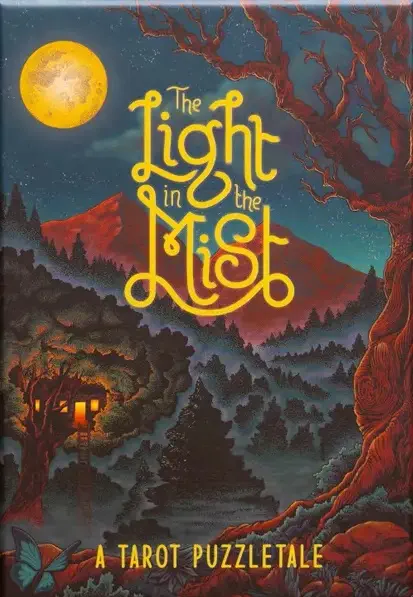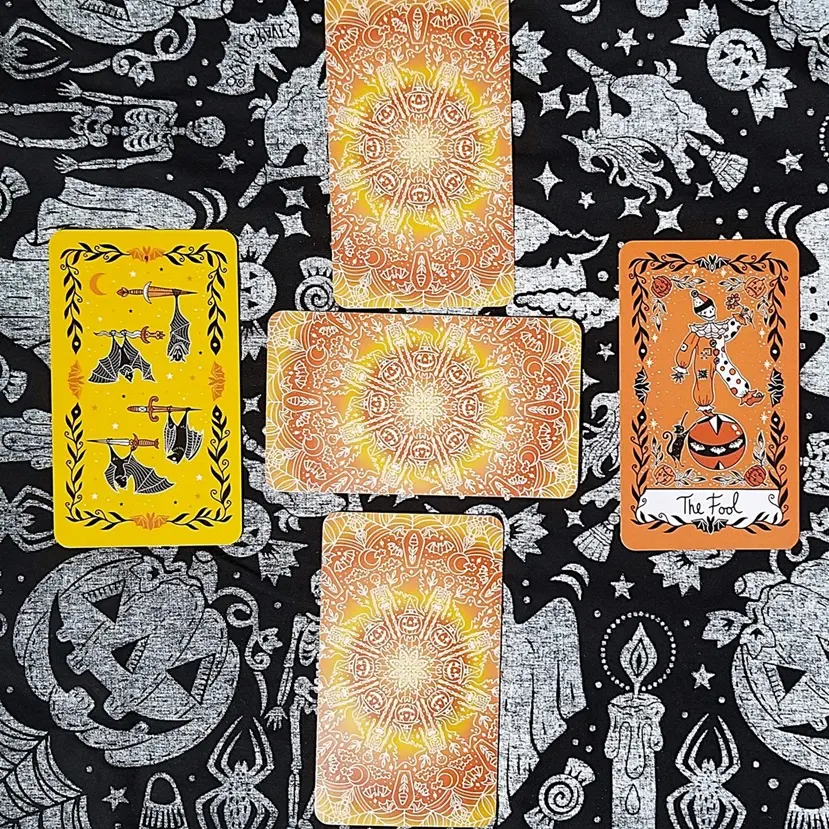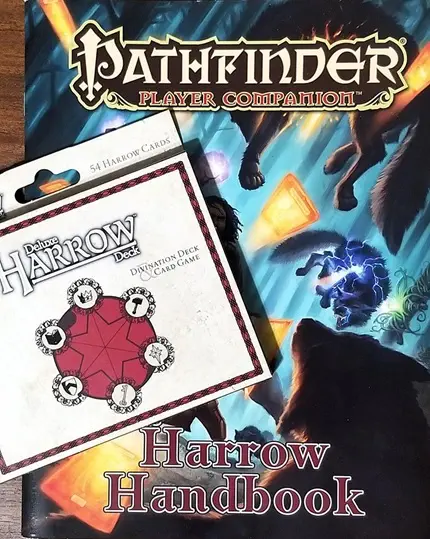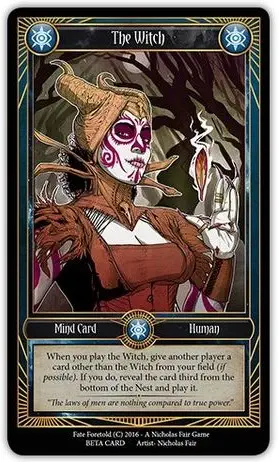Tarot cards have long been shrouded in mystery, often relegated to the realm of fortune-telling and divination. However, their true potential extends far beyond predicting the future. This ancient system of symbols and archetypes offers a rich tapestry for self-exploration, personal growth, and creative inspiration. Recently, tarot has also found a unique niche in the world of modern gaming, where its imagery and themes are creatively woven into gameplay and storytelling. In this blog post, we’ll delve into the multifaceted uses of tarot, revealing how these cards can serve as powerful tools for introspection, narrative development, and even problem-solving when used on the tabletop in a gaming session. Whether you’re a seasoned tarot reader, a curious beginner, or a passionate gamer, you’ll discover that the magic of tarot transcends mere predictions; it can serve as a gateway to deeper narratives and innovative gameplay that can ignite your imagination and enhance your gaming experience.
It would seem tarot has come full circle, having started off as a game, evolved into what many consider primarily a tool for divination or introspection, and now returned as a versatile medium for gaming. As mentioned earlier this week on our social media, tarot cards were originally a simple deck of cards used to play a trick-taking game, and many variations of these original games are still played today. French Tarot and Tarocchi, for example, are both intriguing variations of the traditional tarot card game, each with its own unique history and rules. French Tarot, known for its distinctive deck featuring 78 cards—including the iconic trumps and a separate suit of “Tarot” cards—emphasizes trick-taking gameplay and strategic partnership dynamics. Players bid on the number of tricks they can win, creating a competitive yet collaborative atmosphere. In contrast, Tarocchi, originating from Italy, boasts a rich history that dates back to the 15th century and encompasses a variety of regional variations. Its gameplay often focuses on a blend of trick-taking and melding, allowing for a more casual and social experience. Both games reflect the cultural nuances of their respective origins, showcasing the evolution of tarot as not just a tool for divination but as a vibrant medium for social interaction and entertainment.
Tarot cards have increasingly found a place in the realm of tabletop RPGs, where their rich symbolism and diverse interpretations enhance storytelling and gameplay. This integration allows players and Game Masters to tap into the archetypal imagery of tarot, fostering deeper character development and narrative depth. Some of the early examples of such use include Dungeon & Dragons‘ Tarroka Deck (1992), which serves as a fortune-telling tool for characters and helps to guide the narrative in the Ravenloft campaign setting. In Mage: The Ascension, the Tarot Deck (1995) plays a significant role in exploring the themes of fate and reality, allowing players to draw cards that influence their magical abilities and the direction of their characters’ journeys. Similarly, Pathfinder‘s Harrow Deck (2008) offers a unique blend of gameplay mechanics and storytelling elements, enabling players to draw cards that can affect outcomes and reveal insights about their quests and challenges. These decks not only provide randomizing elements to gameplay but also encourage players to engage with the narrative on a more thematic level by fostering a collaborative storytelling environment. Both players and GMs can build upon the cards’ meanings to weave intricate plots and character arcs.
As this trend continues to evolve, tarot cards—and similar game aids—are becoming powerful tools for enriching the role-playing experience, transforming games into profound explorations of fate, choice, and destiny. In modern projects such as Royal Blood: A Tarot Heist RPG and The Hidden Isle: A Tarot RPG of Sorcery and Adventure, the use of tarot has progressed beyond merely serving as plot devices or game aids; these games integrate cards into their core mechanics instead of relying on dice. Royal Blood, originally written in 2016, blends traditional tarot mechanics with a heist narrative, allowing players to utilize a custom deck to build characters, shape the narrative, and resolve player actions as the plot unfolds. Likewise, The Hidden Isle employs tarot as a central mechanic, where players draw cards to navigate a mysterious archipelago filled with secrets and challenges. The cards not only dictate gameplay outcomes but also enrich the storytelling by helping create backstories, sparking imagination, revealing hidden truths, and guiding players through their adventures. This innovative use of tarot in modern RPGs demonstrates its potential to deepen immersion and foster creativity, proving that tarot is not just a relic of the past but a potential tool for shaping the future of role-playing games.
With tarot’s influence expanding within the realm of tabletop RPGs, it is also making waves in the world of board games, where its rich imagery and thematic depth serve as both a compelling theme and a dynamic gameplay mechanic. Games such as Fate Foretold (2017), The Light in the Mist (2022), and Sibille (2025) weave tarot into their mechanics and themes in distinct and innovative ways. Fate Foretold is an immersive card game that skillfully integrates tarot, inviting players to explore their destinies in a mystical world. The cards not only influence the unfolding story but also provide distinct effects that can alter player actions, create challenges, and shape the game’s outcomes. As players navigate a series of quests and dilemmas, they must strategically manage their hand of tarot cards to seize opportunities, reveal hidden truths, and impact their characters’ fates. This dynamic interplay between drawing cards and making decisions fosters a rich storytelling experience, emphasizing themes of choice and consequence while encouraging deep engagement with the lore and artistry of tarot. Additionally, there is an actual tarot deck designed with art from Fate Foretold, which enhances the game’s thematic experience and deepens players’ connection to its narrative elements while staying separate from the gameplay.

Though The Light in the Mist similarly employs a tarot deck as both a gameplay mechanic and a core element of its narrative structure, it conversely functions as a cleverly designed puzzle game that challenges players to think critically and collaboratively. Instead of relying on conventional tarot themes, the game explores uncharted territory, presenting players with scenarios that demand creative problem-solving and strategic decision-making. The tarot cards function as gateways to revealing clues and insights that are essential for navigating the game’s intricate world, where light and darkness intertwine in unexpected ways. This integration fosters a dynamic interplay between the cards and the gameplay, encouraging players to interpret their meanings while unraveling the mysteries of the game. Meanwhile, Sibille offers a more artistic approach, emphasizing the visual and interpretative aspects of tarot while inviting players to take on the roles of seers vying for favor from a select pantheon of deities by accumulating fame, power, wealth, and magical artifacts. Unlike The Light in the Mist or Fate Foretold, Sibille integrates tarot as a central theme, using its rich symbolism to enhance gameplay and decision-making. This game focuses on player competition and strategic resource management, distinguishing it from the more narrative-driven gameplay of the other two titles. By leveraging the thematic depth of tarot, Sibille encourages players to engage deeply with the artistry and interpretation of the cards while navigating a dynamic competitive landscape. Each of these games not only highlights the versatility of tarot in shaping mechanics and narratives but also reflects the growing appreciation for its ability to deepen player engagement and create rich, immersive experiences.
While reflecting on tarot’s remarkable journey, it’s clear that these cards have transcended their origins. Created as a card game, tarot evolved over time into a tool for divination and introspection. Yet, its transformation didn’t stop there; today, tarot serves as a rich source of inspiration for storytelling and gameplay in both RPGs and board games. This progression highlights tarot’s adaptability and enduring appeal as it resonates with diverse audiences. As more creators and gamers continue to find innovative ways to weave tarot’s intricate symbolism into new experiences, its potential shines brighter than ever. Each new iteration invites us to dive into deeper narratives and imaginative gameplay. I’m excited to see how it continues to inspire fresh adventures, mechanics, and storytelling possibilities. Have you discovered unique ways to incorporate tarot into your games? I’d love to hear your stories!
All product photos used in this article were taken and edited by Krista.


